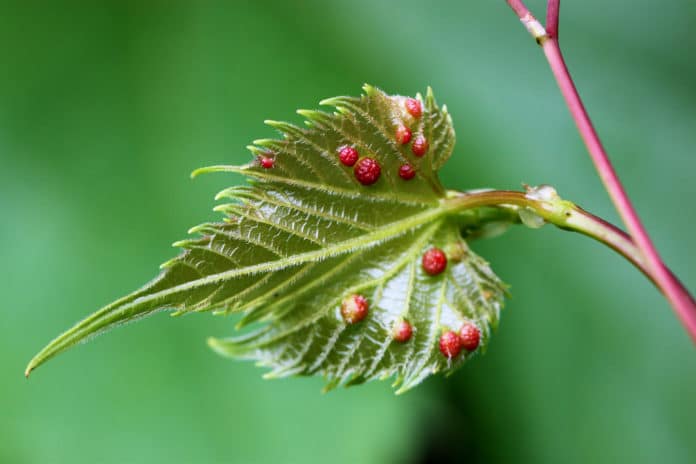A new study by the University of Toledo scientists highlighted a relationship between insects and plants, paving the way towards possibilities in protecting the source of wine and raisins worldwide from a major agricultural pest.
Scientists found that the insect called grape phylloxera to hijack a grape vine’s reproductive programs to create a leaf gall. A gall is an organ somewhat smaller than a marble on a plant that can resemble a wart, flower or fruit and provides insects with a secured place to sustain and reproduce. The insects then use it as a pseudo apartment for the parasite to siphon off the plant’s nutrients.
Dr. Heidi Appel, dean of the Jesup Scott Honors College at The University of Toledo and professor in the Department of Environmental Sciences said, “When galls form on a leaf, the flower genes are on. They shouldn’t be activated, but the insect is manipulatively inserting its own signals into the pathway to get a flower-like result.”
The insect lays an egg and starts the process to exploit the plant’s reproductive genetic machinery, directing the plant to create these structures.
Appel and Dr. Jack Schultz, senior executive director for research development at The University of Toledo, said Charles Darwin guessed at the idea in 1867 when he observed that the gall bears a certain degree of resemblance to the inside of a peach when cutting open.
“We examined Darwin’s hypothesis and found the insect forces the plant to use the same genes to make a gall that the plant uses to make a flower or fruit. The plant produces the central part of a flower known as the carpel in a place the plant would never produce one on its own.”
“In each case, as we genetically held up a mirror to see the differences in the plant at each stage of galling, an insect injected some kind of signal into the plant. The signal took over the plant’s development and told the plant to make a gall on a leaf instead of normal plant tissue.”
Gall harm grape vines by depleting assets and hindering photosynthesis, bringing about lower yields. By recognizing the qualities in grape vines that must be actuated for a creepy crawly to deliver a nerve, scientists can next figure out how to obstruct the bug from assaulting the plant.
Schultz said, “While North American grape vines have developed the ability to resist phylloxera, one option is to cross breed plants to be genetically resistant. Another option is to create a biologically based pesticide to spray on grape vines to manipulate the hormones in plants to be active at different times.”
The research is published in the latest issue of Nature Scientific Reports.
